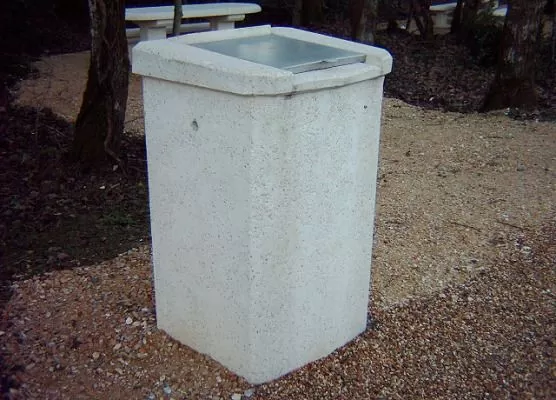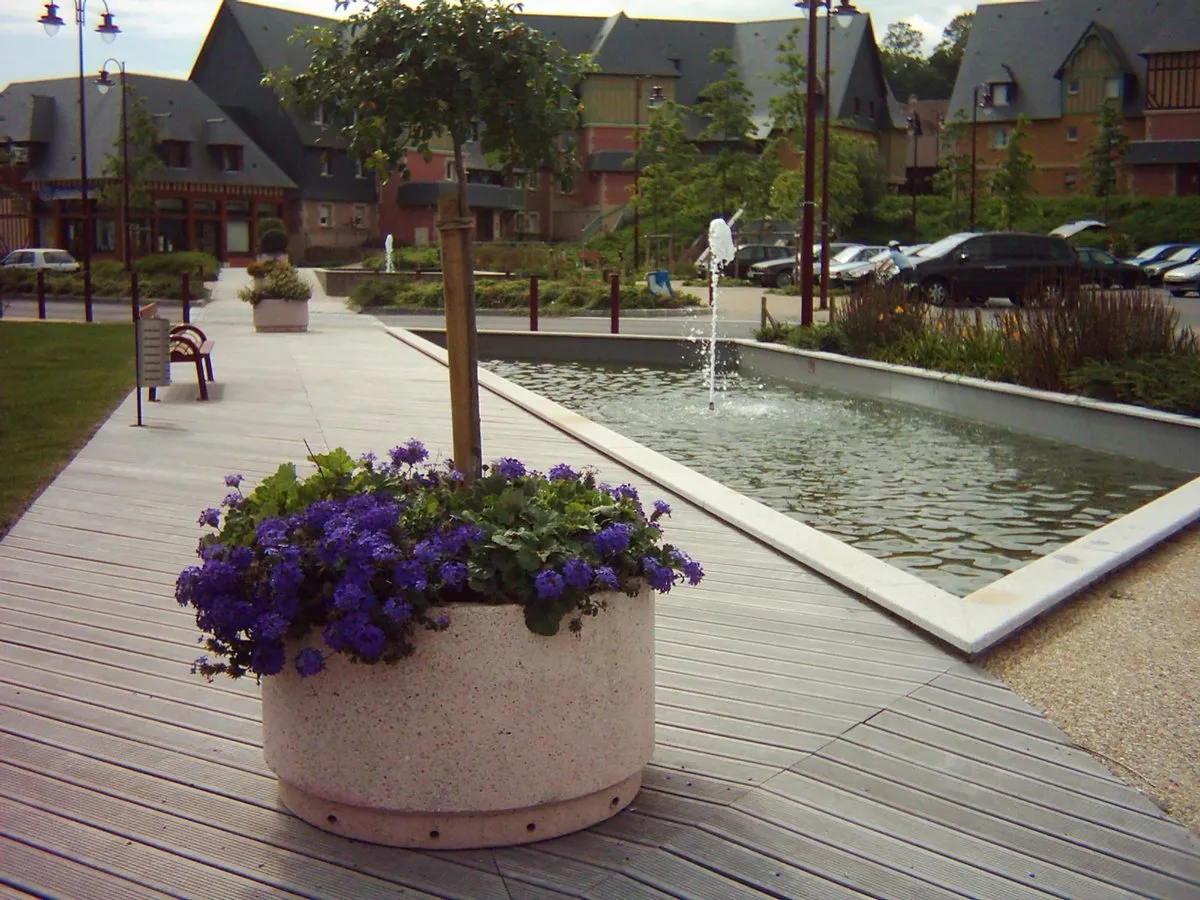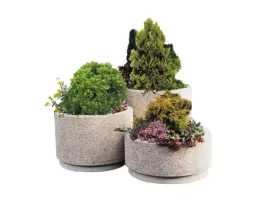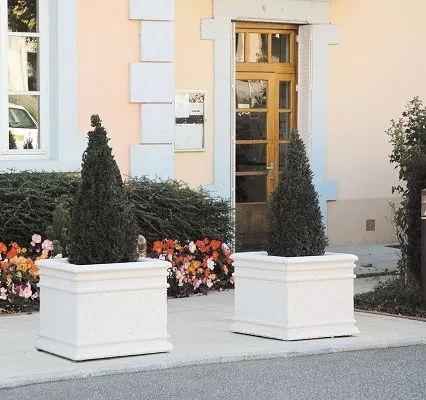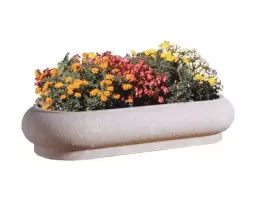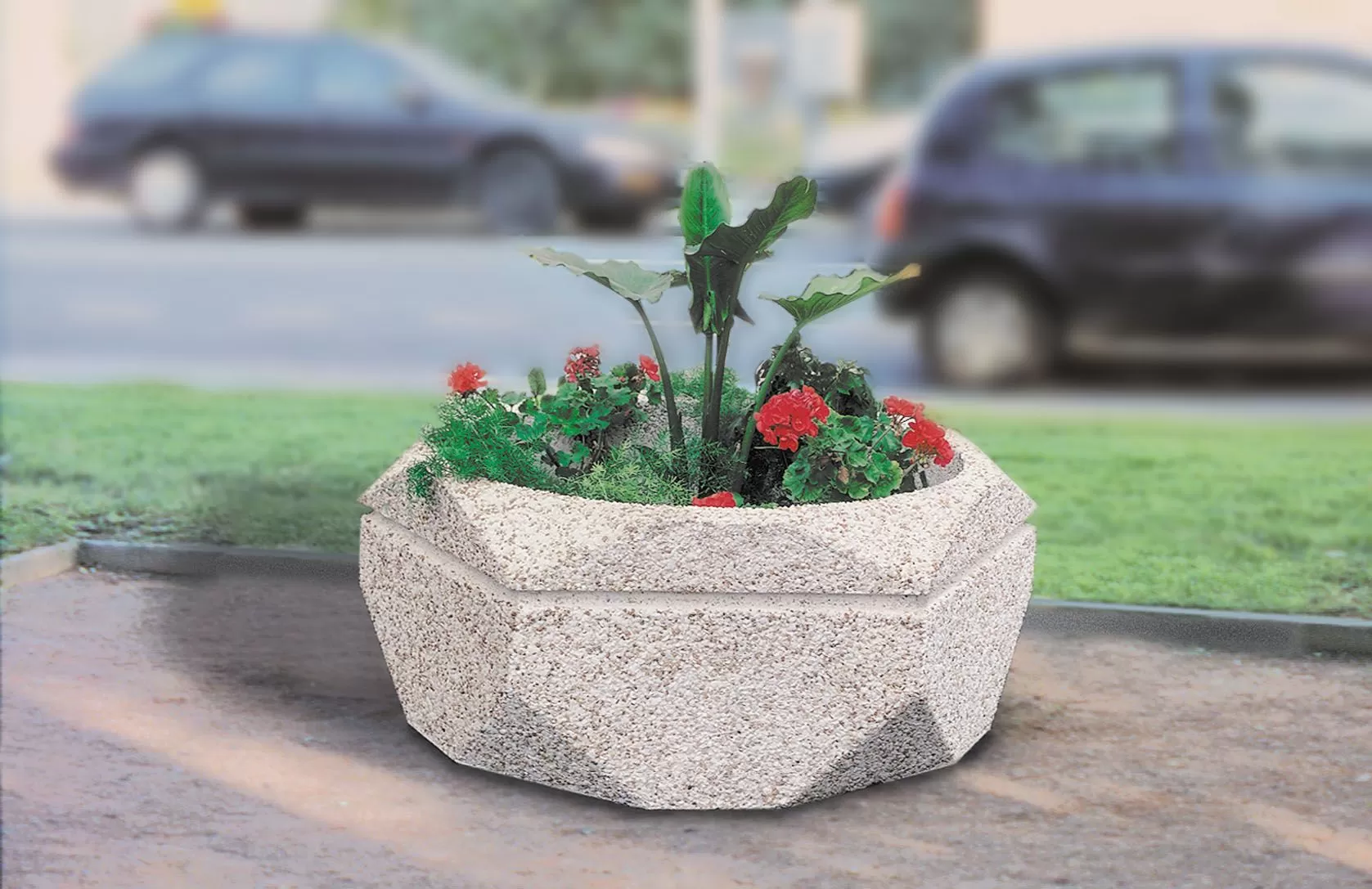Flower pots and planters can act as reservoirs of biodiversity in city centres. Planters are installed at the entrances to ""towns in bloom"", as well as in squares and along traffic routes. How should one choose these essential pieces of street furniture? What are the advantages of concrete planters ?
1 - Designs of pots and planters
Traditional style, authentic look, organic curves or monolithic mass... The design of a pot or planter is just as, if not more important than its contents. Planters are at the forefront of urban design. The dimensions of the structure define the surface area and volume occupied. Some models feature a seat, combining the functions of a planter and a public bench.
The appearance of tubs and pots should blend in with the city's architecture, their characteristics are most often chosen to suit the location. The plants and flowers may change, but the planter will stay with the community for several decades.
2 - Integrating concrete planters with existing street furniture
In order to blend in with a city's architecture, street furniture will generally be selected for its similarities in terms of :
- style
- colour palette
- materials
- and also proportions
Its dimensions can emphasize the horizontal and vertical characteristics of existing buildings in the town. Curves and organic patterns are generally preferred near natural sites, along coastlines and near hills, mountain ranges and forests. A succession of lines and volumes can also evoke the rhythm of the buildings in the surroundings, or other elements in the public space.
3 - Volume of the container
The volume of the container is a more pragmatic question. The goal is to provide optimum growing conditions for the plants and flowers selected to enhance the urban space.
Roots must be able to grow deeply, with enough space between each plant, depending on the type. The surface area of the planter must also be able to accommodate a number of varieties of flowers and plants.
4 - Complementary functions of concrete planters
Decoration and ornamentation are not the only functions of planters. This item of street furniture can also be used to delimit and protect specific areas. The planter can therefore :
- mark the entrance to a town holding the ""Villes et Villages Fleuris"" label
- protect a pedestrian area or square, or a playground
- delimit a greenway from other roads used by cars or motorcycles...
These complementary functions can help determine the type of planter to be used. For example, planters that contribute to pedestrian safety in a city should be particularly sturdy and have high inertia.
5 - The contents of planters
The contents can support a planter's complementary functions. To isolate a greenway running alongside a busy road, the local authority can use tall flowering plants.
Conversely, if the goal is to separate different spaces without hindering exchanges between their users, low planters decorated with colourful floral arrangements might be more appropriate.
The fragility of the plant species must also be taken into account to ensure it is consistent with the planter's functions.
6 - Displaying a planter
The location of the planter will also determine the choice made by the local authority. There are several reasons why premature deterioration may occur :
- exposure to road traffic and special traffic conditions (heavy vehicle traffic, narrow lanes, etc.)
- very sunny areas, those subject to humidity, frost, strong winds etc.
- position near a river or body of water
- frequency of deliberate damage to the planter's surroundings
Depending on the risks of deterioration identified in the planter's environment, the local authority may draw up a list of essential characteristics for its planters :
- hygrothermal properties
- fire resistance
- washable, repairable surfaces...
Some materials tick several boxes, while others require more strategic use. For example, plastic is an inexpensive alternative that can exceed the technical and sometimes aesthetic qualities of the planter.
7 - Material: why choose a concrete planter ?
Concrete offers a number of advantages in the construction and installation of sustainable street furniture :
- good fire performance
- high resistance to temperature variations
- resistance to frost, rain, humidity and UV rays
- recyclable and environmentally inert
A concrete planter is fire-rated M0 (non-combustible) and offers enhanced resistance to the hazards associated with its environment, i.e. accidental and deliberate damage, or gradual deterioration due to natural wear and tear.
As a low-temperature conductor, concrete is also an ideal solution for arming cities against the onslaught of heat waves. This material is therefore regularly used for all types of street furniture.



